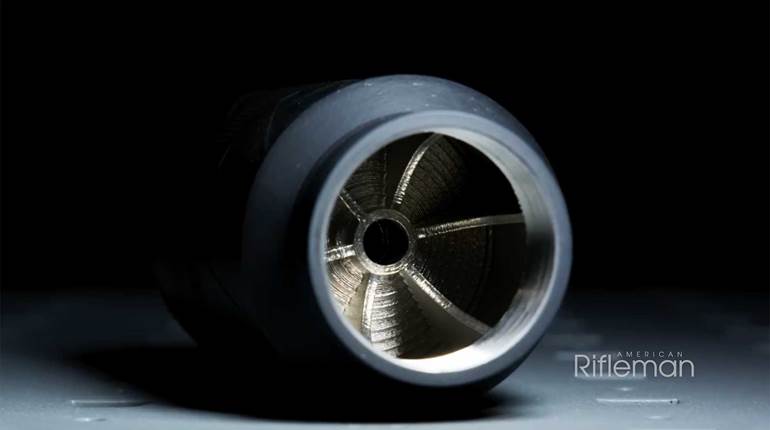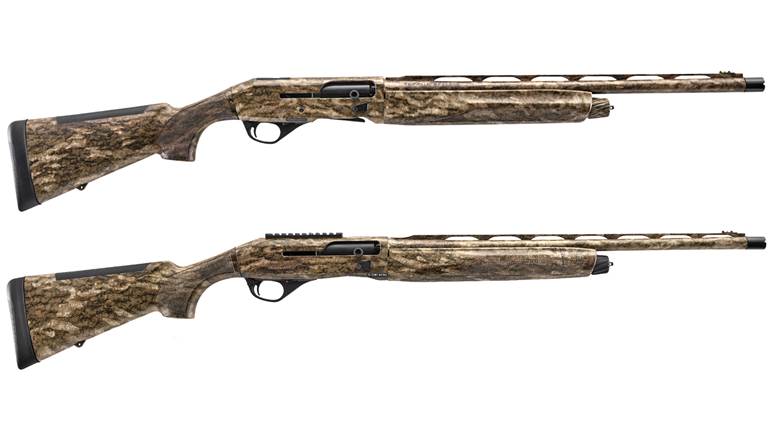
When it comes to home defense, the modern American citizen has a wide variety of firearm platforms and calibers to choose from. While the topic of which is best suited for home defense is hotly debated, one platform that many Americans have turned to is the AR-15, as well as other modern sporting rifles (MSRs) and large-format pistols chambered for the 5.56 NATO cartridge. This is no surprise, as such rifles and pistols have established themselves in the market as some of the most widely available, user friendly, adaptable and controllable options available.
The relatively light weight, ease of operation and plentiful amount of ammunition held in standard magazines of these platforms make them advantageous in number of situations, including home defense. The same is true for the wide range of .223 Rem. and 5.56 NATO ammunition available, which is plentiful, given the commonality of the chambering. However, not all loads for the .223 Rem. and 5.56 NATO are best suited for home defense, and it all boils down to penetration and expansion.
While many loads available for these two closely related chamberings would work adequately against a threat, their tendency to overpenetrate can be hazardous. Many full-metal jacket (FMJ) loads, like the 55-grain XM193 and 62-grain XM855 5.56 NATO loads that are common on the market, can penetrate through several layers of material before finally losing enough energy to no longer be harmful. This means that, if used in a home-defense setting, these rounds can pass through a threat and continue on through other walls and spaces of the home.
 Hornady's 55-grain Critical Defense FTX .223 Rem. (left), compared with XM193 (center) and XM855 (right) 5.56 NATO loads.
Hornady's 55-grain Critical Defense FTX .223 Rem. (left), compared with XM193 (center) and XM855 (right) 5.56 NATO loads.
Many .223 Rem. and 5.56 NATO FMJ loads also will not expand like purpose-built expanding bullets, and as a result do not dump the full load of kinetic energy into the target. A projectile’s ability to expand, as is the case with hollow points, allows it to disperse most, if not all, of its kinetic energy into the target. This adds more energy to the ballistic impact, creating incapacitating wounds, and drains the energy from the projectile, making it less likely to pass through as much material as an FMJ beyond the target.
Overpenetration is an issue that exists with most all common calibers and loads, so it is critical to always be aware of what is beyond the target. With that in mind, there are purpose-made defensive loads for the .223 Rem. and 5.56 NATO that are geared toward these sorts of personal-defense scenarios. These options are designed with expansion in mind and often feature hollow points or ballistic tips meant to expand rapidly in soft tissue.
However, not all defensive .223 Rem. and 5.56 NATO loads are created equal, with some having less penetration than others. At the same time, some are specifically designed to penetrate through layers of clothing, glass or drywall without deforming or deviating before expanding on impact with the target. This feature is typically described as being “barrier-blind." A useful tool to fall back on when making a selection in this case is the FBI’s test protocol, which measures penetration and expansion capabilities of rounds fired into ballistic gelatin through various barriers, including heavy clothing, wallboard and automotive glass. Many manufacturers of defensive loads list the results, offering a look into the capabilities of each round in both expansion and penetration. Here are three such loadings for .223 Rem. and 5.56 NATO that are geared for defensive use:
Hornady Critical Defense FTX .223 Rem.
With bullet weight options of either 55 or 73 grains, Hornady’s Critical Defense .223 Rem. loads feature the company’s FTX bullet with a FlexTip at the front of the bullet. The red-colored FlexTip protects the hollow cavity underneath it at the nose of the bullet, preventing it from being filled by heavy clothing before expanding in soft tissue. These rounds are specifically designed to expand rapidly, even at lower velocities and close ranges, making it well-suited for the role of a home-defense load. The 55-grain version has a listed velocity of 3,240 f.p.s. out of a 24” barrel, while the 73-grain load has a velocity of 2,790 f.p.s.

Despite the lower velocity of the heavier load, the 73-grain option can hold onto its energy longer, and thus offers a bit more penetration and energy. However, neither of these loads are designed to be barrier-blind and will not pass through more than 12” of material, making them a good choice for situations where overpenetration is a concern. These loads also feature nickel-plated cases for increased lubricity, corrosion resistance and reliable feeding, as well as to make the cartridges more visible in low-light situations. The propellants used also produce minimal flash at the muzzle, which can be a helpful feature when using a shorter-barreled large-format pistol or a rifle that lacks a flash hider, minimizing the chances of a shot blinding a home defender in low light.
Speer LE Gold Dot .223 Rem.
Speer's Gold Dot is a familiar name in the defensive ammunition market, having a long-established track record of purpose-built defensive loads. In this category, Speer offers three bullet weights for the .223 Rem., with 55-grain, 62-grain and 75-grain projectiles. Regardless of the bullet weight, each of the three loads uses Speer’s Gold Dot bullet design, which feature a bonded core, using the company’s patented Uni-Cor method. This prevents the jacket from separating from the core of the bullet when passing through barriers without deforming, while still rapidly expanding once it penetrates into soft tissues. These projectiles also retain all mass when passing through heavy clothing, reducing the possibility of poor expansion and penetration.

The Gold Dot .223 Rem. bullets are also engineered to pass FBI protocol testing through barrels shorter than 16”, with the 55-grain version having a muzzle velocity of 3,013 f.p.s. and penetration depth of 14.75”, while the 75-grain version has a muzzle velocity of 2,502 f.p.s. and penetrates 16.75”. With this level of penetration, these loads do present the risk of overpenetrating through multiple walls at close range. Like the Hornady's Critical Defense FTX, the Speer Gold Dot loads feature nickel-plated brass casings.
Black Hills TSX 5.56 NATO
Another option for those seeking a home-defense load is Black Hill’s TSX 5.56 NATO, with 50-grain and 62-grain options. Designed in cooperation with Barnes, the TSX is specifically geared for law enforcement applications, being able to penetrate barriers like glass and drywall while still offering decent expansion. These loads are optimized to function in a wide range of platforms from full 20” rifles down to shorter-barreled pistols, and are also tailored to work in twist rates from 1:12” to 1:7”, which completely encompasses the twist profiles found in the AR-15 family.

Despite the more rugged construction of its bullet, with a jacketed hollow point, and its ability to be barrier-blind, the TSX passes the FBI protocols and only travels 14” into gelatin. The bullet expands rapidly after entering soft tissue, and quickly loses energy past 100 yards, making for a home-defense load option that can both penetrate and expand, but is less likely to overpenetrate.
Alternatives
The three loads above are just a few of the potential options that could be used for home defense. While more expensive than standard FMJ loads, they offer better effect on target and minimize the potential risks associated with overpenetration. Yet these options are not the only one to consider, as there are also varmint loads that could prove useful in such a situation if other options are not available. An example of this is Hornady’s various V-Max .223 Rem. loadings, which feature a ballistic tip.
These rounds do not pass the FBI protocols for penetration, as they are not designed to be barrier-blind. As a result, there is not much data on the terminal performance of these loads available which showcase how they would perform in a defensive situation. However, they expand just as much as some of the defensive loads and will not penetrate as deeply as a round made to be barrier-blind. Additionally, they are typically more readily available at sporting good stores.
With this in mind, the AR-15 platform, along with other MSRs and large-format pistols chambered in 5.56 NATO can be suited for home defense with the right load. Each situation is unique, though, so it's up to the end user to make a plan of action for such a scenario and decide which attributes they most desire out of a defensive .223 Rem. or 5.56 NATO load.





































